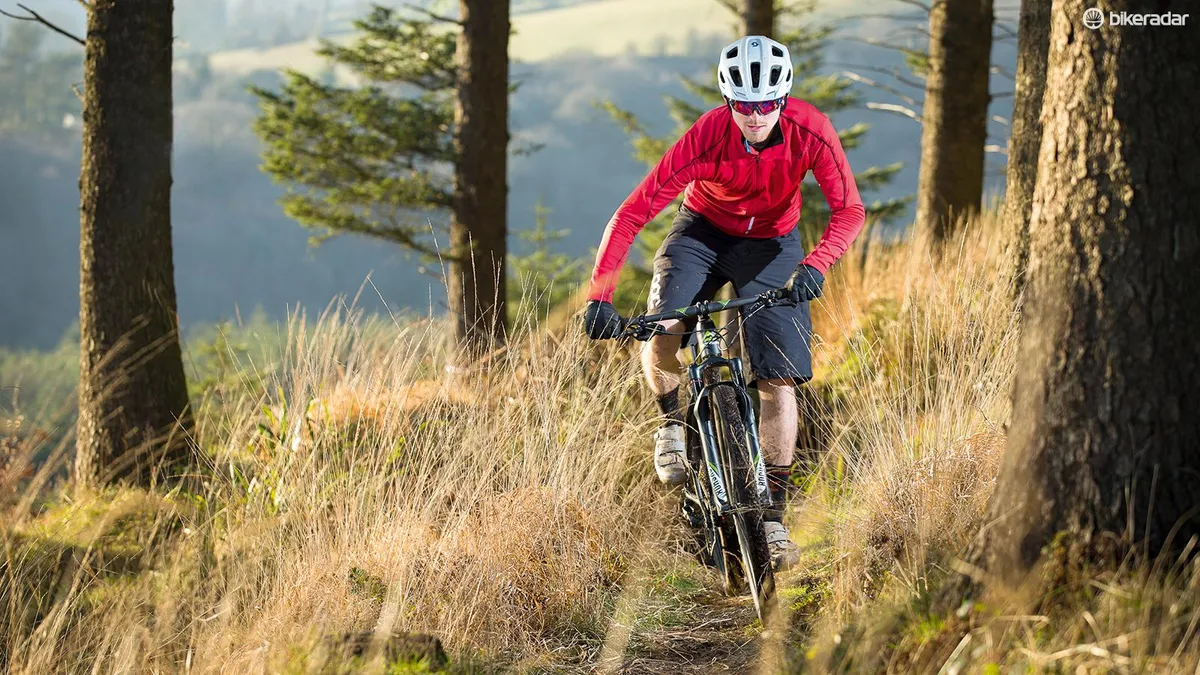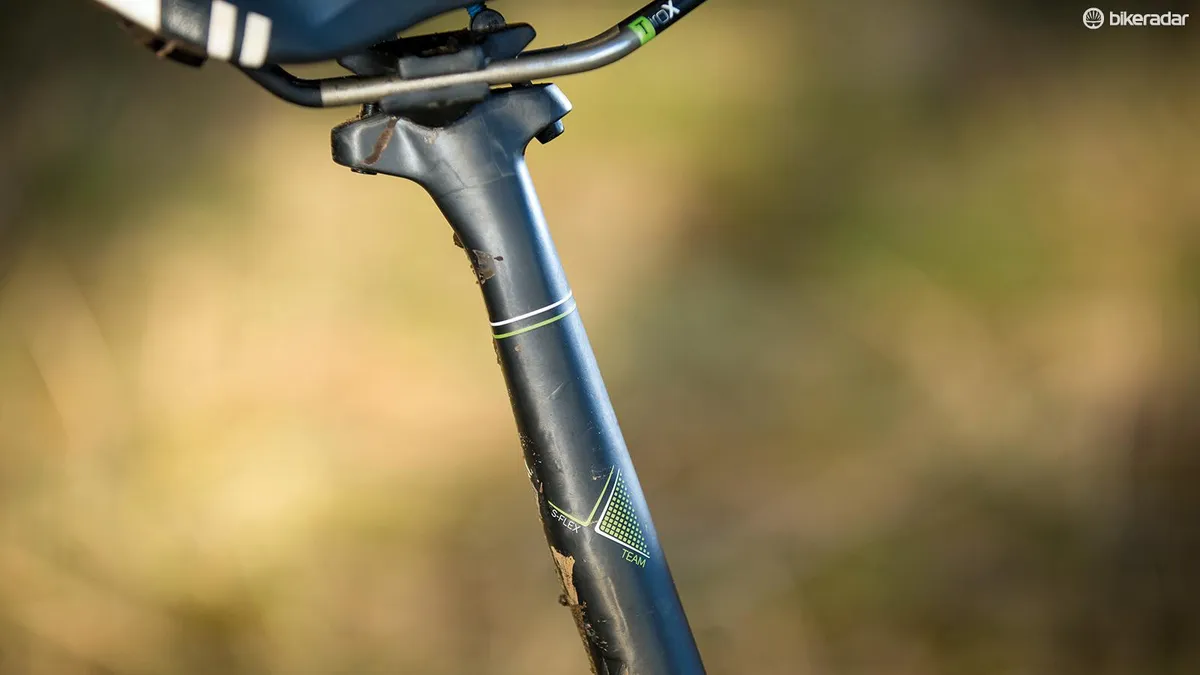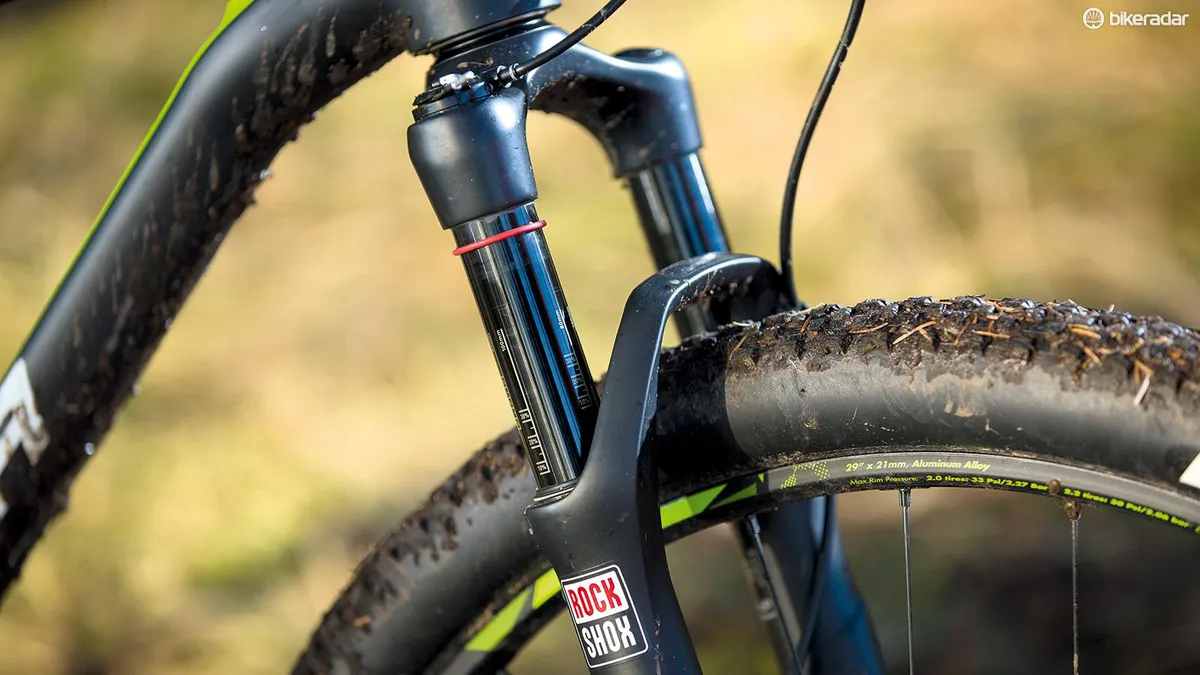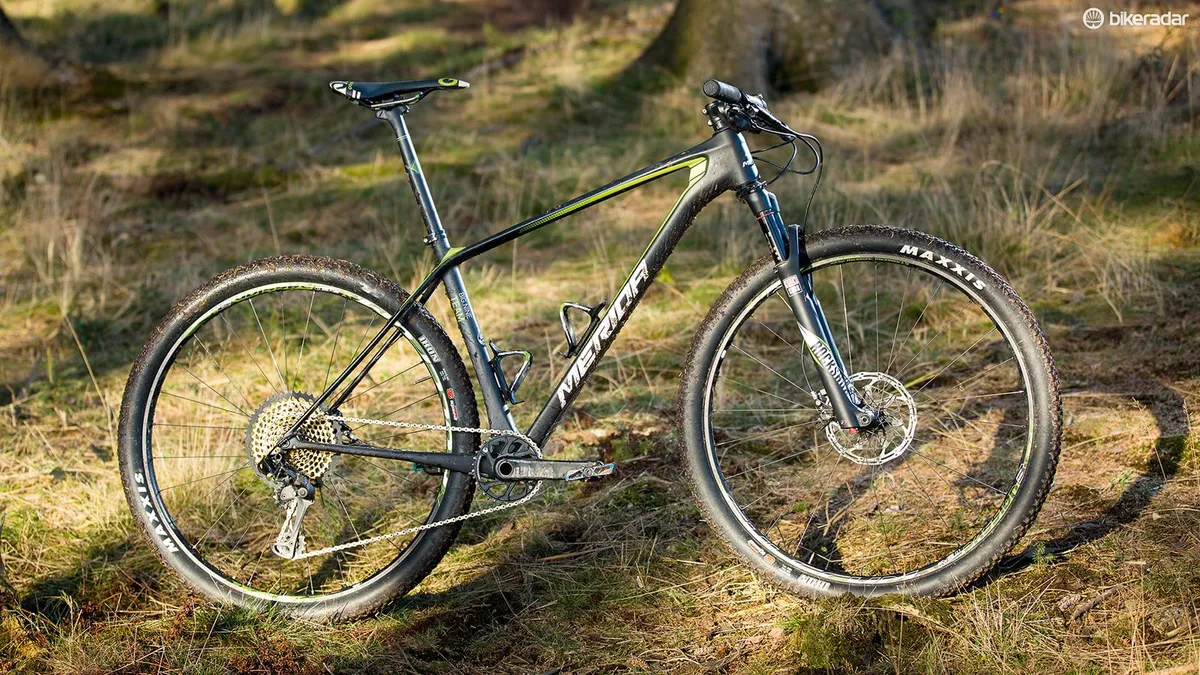Scan any cross-country World Cup race in 2017 and you’ll discover more full suspension bikes than ever before. Why, you may ask? It’s likely down to the increasingly technical tracks and competitive weights of most brands’ fully sprung machines. This has led many to question whether the hardtail is dead. Well, if brands like Merida have anything to do with it, the answer’s a fat ‘no’.
- Merida Big Nine Team for the MTB Marathon World Championships
- Shimano SH-XC9 S-Phyre vs. Sidi Tiger XC shoes
Merida’s Big Nine model is a race-ready hardtail for the modern cross-country rider that builds on the 2016 model. New for 2017 is the extended reach length — to 438mm (size large) — a head angle slackened to 70 degrees and some compliance added to the frame.
This is noticeable around the chain and seatstays, where Merida has designed flattened sections dubbed Flex Stays, the idea being to extract some of the buzz out of the trail and reduce fatigue. Other modern features include boost spacing at the rear and full internal cable routing, which has removable plugs for easy maintenance.

The Team model on test was incredibly close to being 100 percent race ready out of the box, with the only offender being the skinny-walled Maxxis Ikon tyres. They might be light but they’re easy to puncture, so if you live in the real world and don’t have a mechanic waiting for you in the pits with fresh shiny wheels, change them ASAP.
SRAM’s Eagle groupset matches the bike’s race intentions perfectly: lightweight, crisp shifting and a great range. The remainder of the build is finished off with equally top-end parts: SRAM Level Ultimate brakes, Fulcrum wheels and a full carbon-finishing kit.
All this dreamy spec, coupled with Merida’s carbon expertise, results in a build that weighs just 8.8kg in size large. For a complete bike out of the box, they don’t come much lighter.

Being such a light bike, clearly my first port of call involved a steep climb. And, well, simply put there’s simply no getting around the fact that riding a 29er weighing under 9kg makes climbing feel effortless compared to a heavier full-suspension machine.
You may lose some of the control associated with a full sus when the climb’s really technical, but for anything else it’s a rocket. Coupled with the 50t cog on the Eagle groupset and you should tame almost any ascent.

Tyre change, please
Hitting the singletrack isn’t quite so positive thanks to those narrow(ish) Maxxis Ikon tyres. While they say 2.2, I’d prefer something a little wider to take some of the harshness out of the trail.
That thin sidewall raises the potential of puncturing, so it wasn’t really a surprise when I flatted the rear within the first 30mins of riding. So one last time, change those tyres Merida!

While the Flex stays and flattened seatpost combine to take some of the sting out of the ride, it’s still a superlight hardtail; you’ll move very quickly, but your body will pay for it with aching limbs the day after.
My first day of testing took place in some truly biblical — and also very gritty — conditions so the Big Nine Team received a pounding. Unfortunately, this led to the bottom bracket nearly seizing up the next day. I was able to get it moving again, but of all the press fit bottom brackets I’ve ever ridden, this has never happened so quickly, and something I’d hope would be covered under warranty.
I was worried the Big Nine could suffer from twitchiness on the descents but thanks to the decent geometry, short stem and wider bars, you feel confident when pushing the limits.

You can even fit a dropper post to the Big Nine, which would really open up the ability to push it hard on the descents, although perhaps even past what this superlight bike can handle.
My time aboard the Big Nine left me under no illusions as to who the bike is for. While many brands are marketing their cross-country race bikes as playful and more forgiving, the Big Nine remains a pure race machine, designed for performance at the slight expense of fun.
This isn’t necessarily a bad thing, as some riders still require a razor-sharp bike that takes no prisoners in terms of thrashing the competition and their body. So if you’re all about Lycra, blowing your brains out with lactic acid and not much else, the Big Nine comes highly recommended.


